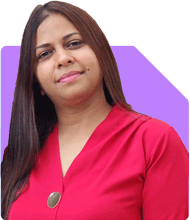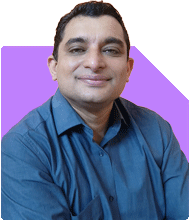Nidhi Gupta | Answer |Ask -Follow
Physiotherapist - Answered on Oct 16, 2023
She founded the Merahki Holistic Wellness Company in 2011 and is the co-founder of Miraaya Holistic Growth Centre.
She has a bachelor's degree in physiotherapy from Sancheti Institute for Orthopaedics and Rehabilitation, Pune, and certifications in myofascial release, dry needling and craniosacral therapy from New York, San Francisco and Singapore.
She combines both Eastern and Western ways of healing. ... more

I take Roseday Gold (Clopidogrel-75/Asprin 75/Rosuvastatin 20) for 5 years now, i experience neck muscle pain while turning exteme left or right or face up. is this a side effect of the medicine?
Rosuvastatin can have side effects like muscle pain.
You can once see a physiotherapist and let them evaluate your neck bones and muscles. If there is any tightness or muscle imbalance they can help you out. If it is more muscle or bone related then the physiotherapy should make a difference in 4-5 sessions.
If it because of side effects of the medicine then you should talk to your Dr and see what you can do about it. Usually ayurvedic nutrition guidelines can help to reduce side effects caused by medicines.
You may like to see similar questions and answers below
Nidhi Gupta | Answer |Ask -Follow
Physiotherapist - Answered on Mar 22, 2023
Nidhi Gupta | Answer |Ask -Follow
Physiotherapist - Answered on Aug 09, 2023
Dr Shakeeb Ahmed Khan | Answer |Ask -Follow
Physiotherapist - Answered on Mar 15, 2024
Dr Shakeeb Ahmed Khan | Answer |Ask -Follow
Physiotherapist - Answered on Mar 23, 2024
Kanchan Rai |646 Answers |Ask -Follow
Relationships Expert, Mind Coach - Answered on Dec 12, 2025
Ravi Mittal |677 Answers |Ask -Follow
Dating, Relationships Expert - Answered on Dec 12, 2025
Ramalingam Kalirajan |10881 Answers |Ask -Follow
Mutual Funds, Financial Planning Expert - Answered on Dec 12, 2025
Ramalingam Kalirajan |10881 Answers |Ask -Follow
Mutual Funds, Financial Planning Expert - Answered on Dec 12, 2025
Reetika Sharma |423 Answers |Ask -Follow
Financial Planner, MF and Insurance Expert - Answered on Dec 12, 2025
Reetika Sharma |423 Answers |Ask -Follow
Financial Planner, MF and Insurance Expert - Answered on Dec 12, 2025
Reetika Sharma |423 Answers |Ask -Follow
Financial Planner, MF and Insurance Expert - Answered on Dec 12, 2025
Reetika Sharma |423 Answers |Ask -Follow
Financial Planner, MF and Insurance Expert - Answered on Dec 12, 2025
Reetika Sharma |423 Answers |Ask -Follow
Financial Planner, MF and Insurance Expert - Answered on Dec 12, 2025
Mayank Chandel |2572 Answers |Ask -Follow
IIT-JEE, NEET-UG, SAT, CLAT, CA, CS Exam Expert - Answered on Dec 11, 2025



























